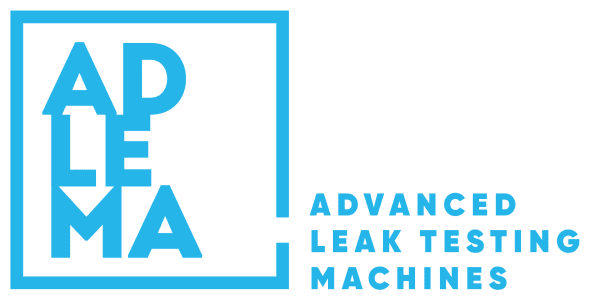Leak Test System Selection
Many products must have leak-proof properties. It is an important quality control method to subject all products produced in the production process to leak testing. When performing leak tests, it is not the “0” leakage of the product that is sought, but its safe and functional operation in accordance with the conditions and purposes of use. If you wish ‘’Is a “0” Leakage Rate Possible in Leak Tests?’’ You can learn more from our article. There are various leak test methods and technologies used in industry. These are bubble observation, manometer, pressure drop, flow measurement, differential pressure drop, helium sniffing and helium mass spectrometry methods.
Leak Test by Bubble Observation Method
In the leak tests performed by the bubble observation method, compressed air is introduced into the product after it is leakproof sealed. Stage 2 is to put the product into the pool and monitor whether bubbles come out of the product. At this point, the decision whether the product is leaking or not is at the discretion of the operator. Even if the product is leaking, the bubble may not be visible during the test or the operator may miss it. Therefore, it is a subjective test method.

Leak Test by Manometer Method
In this method, compressed air is supplied to the part to be tested and the pressure drop is monitored with a manometer. However, since the resolution of the manometers is very low, the test times are very long. Test results cannot be reported and are not suitable for automation.

Leak Testing by Pressure Drop Method
In leak tests using the pressure drop method, compressed air is supplied to the product and pressure changes are monitored by means of a transmitter. The fact that it is suitable for automation, that the results can be obtained objectively by saving the results from the operator’s initiative makes it advantageous compared to other methods in the industry. However, due to the resolution of the transmitter and data reading systems used, it is not possible to perform precise tests with this method. Due to the low reading accuracy, test times are quite long.

Leak Testing by Differential Pressure Drop Method
Compressed air is supplied to the product in the leak tests performed by the pressure drop method. With differential pressure measurement technology, pressure changes are monitored in the Pascal range. Therefore, leak test can be completed in a very short time and with high precision. If we liken the pressure drop tests performed with the transmitter to a balance, the working principle of the differential pressure drop method is like an equal-armed balance. During each test, the product is compared with the reference product or with the extra volume in the device. In this way, the slightest leakage that may occur in the test piece can be detected in a very short time as it will create a pressure difference with the reference piece and the equality will be disturbed.

Leak Testing with Helium Sniffer and Helium Mass Spectrometer
The helium leak testing methods we have developed within the scope of our R&D project utilise helium, a noble gas that is not present in the atmosphere. In the Helium Sniffer method, helium is supplied to the part to be tested. The Helium Sniffer is moved over the part and gives a warning at the point of leakage. The advantage of this method is that the leak point can be detected very easily. In the helium mass spectrometry method, the part is placed in a vacuum chamber. The helium particles escaping from the part are detected very precisely by the spectrometer in the vacuum chamber.

If you cannot decide which leak test method is best for your product, you can contact us.


